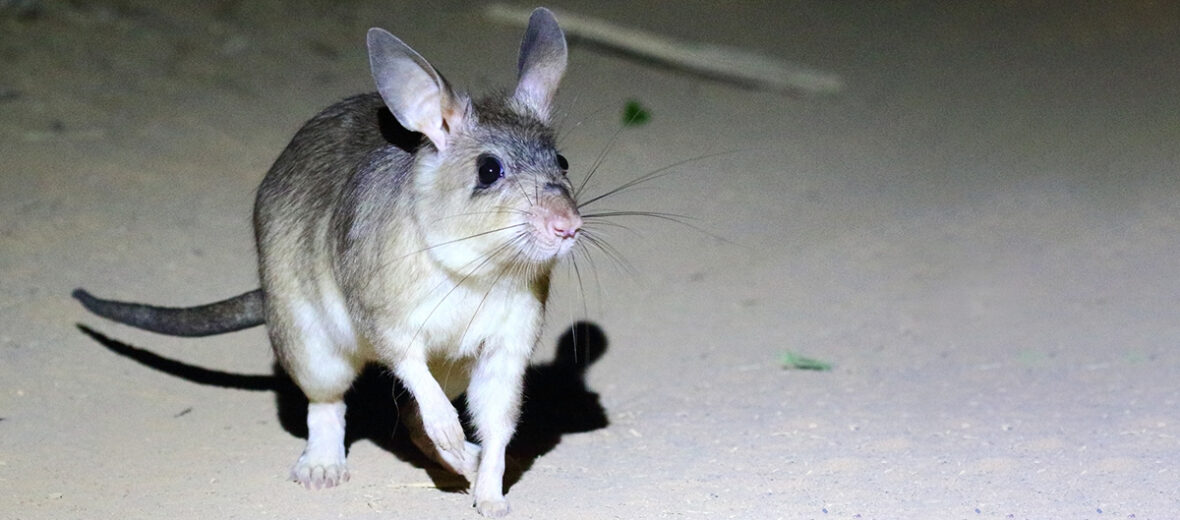
The Malagasy giant jumping rat, aka Malagasy giant rat, votsotsa, or votsovotsa, hails only from the western Menabe region of Madagascar, between the rivers Tomitsy and Tsiribihina. They prefer sandy coastal areas and mature deciduous forests. Sadly, due to the threats of habitat destruction at the hands of the logging industry, farming, and ranching; hunting; trapping; and invasive species, and with them disease, predation, and competition for food, these rodents are listed as Critically Endangered by the IUCN.
First the Stats…
Scientific name: Hypogeomys antimena
Weight: Up to 3 lbs.
Length: Up to 14 inches, plus up to a 10 inch tail
Lifespan: Up to 12.6 years
Now on to the Facts!
1.) Their decreasing wild population consists of just an estimated 5,036 individuals.
2.) They are the only extant species in the genus Hypogeomys, and are known from subfossil remains a few thousand years old.
3.) These are 1 of the few rodent species to practice sexual monogamy (mate for life).
4.) Like many rats, they are nocturnal (active at night).
5.) These fossorial (live in burrows) creatures live in burrows that measure up to 16 feet across and have upwards of 6 entrances. The entrances are always blocked by fill dirt and/or leaf litter to discourage predation by ground boas.
But wait, there’s more on the Malagasy giant jumping rat!
6.) Fossas, introduced dogs & cats, and Malagasy ground boas are their only predators.
7.) Females undergo up to a 138 day gestation (pregnancy) that yields a single pup.
Did you know…?
Malagasy giant rats can jump up to 3 feet in the air.
8.) These rodents mate up to twice in a season.
9.) Their pup is raised by both parents and begins to venture outside the burrow in up to 6 weeks.
10.) The pup stays with mom and dad for up to a year before leaving the protection of mom and dad to start their own life.
But wait, there’s still more on the Malagasy giant jumping rat!
11.) Mom and dad are willing to defend their young with their lives.
12.) Fruits, nuts, seeds, and leaves make up their diet. Bark, roots, and invertebrates are also feasted on.
Did you know…?
Durrell was the first scientist able to breed these rats in captivity. Back in 1990, he brought 5 individuals to Jersey. Since that time, 16 breeding programs have been set up and 12 have been deemed successful.
13.) Being very territorial, they will mark their territory with urine, feces (poop), and secretions from their scent glands.
14.) A great deal of feral cats can also carry a parasite called toxoplasmosis which causes these rodents to lose their fear of cats, almost to the point of being attracted to them. This results in their being caught and killed easily.
15.) Hantavirus is another rodent disease that has destroyed their population. This disease causes kidney failure.
Now a Short Malagasy Giant Jumping Rat Video!
Be sure to share & comment below! Also, check out the Critter Science YouTube channel. Videos added regularly!
Want to suggest a critter for me to write about? Let me know here.
Some source material acquired from: Wikipedia & IUCN
Photo credit: Andrey Giljov



